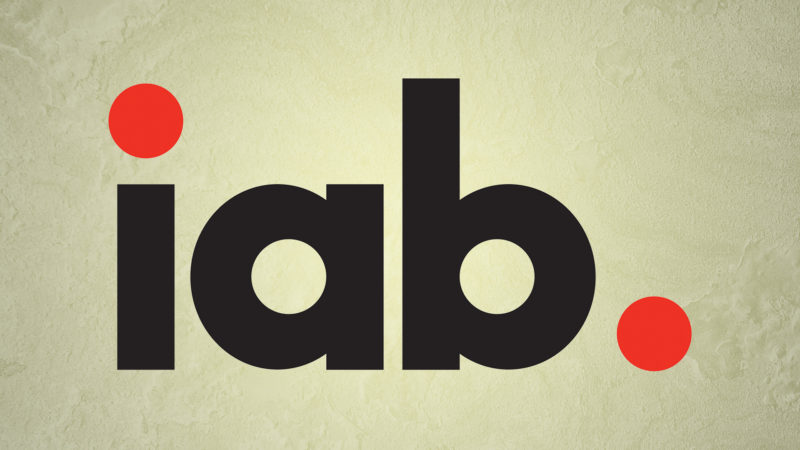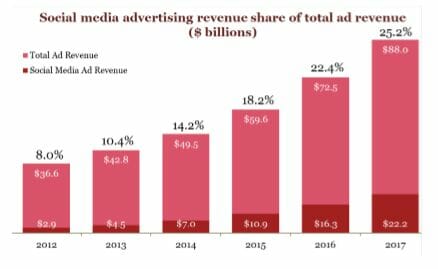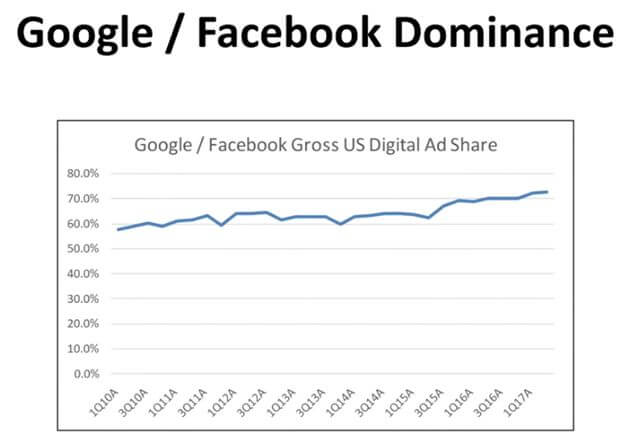IAB says digital ad revenues up 21% to $88B in 2017. Left unsaid: The duopoly dominated that growth
Mobile grew 36 percent year over year to $49.9 billion, accounting for 57 percent of overall digital ad revenues in the US.
The IAB (Interactive Advertising Bureau) is out with its Q4 and 2017 year-end state of the digital advertising industry report. In a repeat of the past several years, digital advertising revenue is up. There was growth across formats and devices. And while the IAB doesn’t name names, Facebook and Google continue to suck up most of the oxygen in the room.
The data for the IAB report is collected from IAB member companies and publicly available corporate data by PwC.
Overall, digital ad revenue grew 21.4 percent to $88 billion in 2017. To put that in perspective, PwC says the revenue change in digital seen last year is greater than in the newspaper industry as a whole.
Digital video increased overall share in 2017, chipping away at search, to $11.9 billion, up 33 percent from $8.9 billion in 2016. Search still continued to grow at 17.5 percent in 2017, to $40.6 billion. Banner revenues, which includes banners, sponsorships and rich media, totaled $27.5 billion in 2017, up 23 percent from 2016.
Mobile continues to gain share, accounting for 57 percent of the overall digital ad pie in 2017, to reach $49.9 billion. That’s more than all digital ad revenues in 2014. Mobile has seen a compound annual growth rate (CAGR) of 71.4 percent since 2010. Mobile share grew across all formats, as shown in the slide from the IAB webinar on the report.
Despite mobile’s ascendance, desktop revenues still grew in 2017, with a CAGR of 6 percent over 2016.
CPMs also increased in 2017, according to data from SQAD.com shared by the IAB. CPMs for in-stream video were up 3 percent 2017 year over year to $25.22, and CPMs for display rose 6 percent to $14.72 on average.
Social media isn’t broken out as a format, but its share of revenue topped 25.2 percent in 2017, reaching $22.2 billion. Facebook, of course, accounts for the bulk of social media advertising spend in the US.
Duopoly dominance
The IAB doesn’t release data on specific companies, but the top 10 companies commandeered 74 percent of total revenues. That share among the top 10 has remained relatively consistent, says the IAB. The elephant in the room is the fact that the top two — Facebook and Google — now make up the majority of that 74 percent.
During the webinar announcing the IAB report, Brian Wieser of Pivotal Research shared his analysis of Google and Facebook’s share of the market in the US. Acknowledging there are “a lot of assumptions” that go into these estimates and that his analysis is based on gross revenue, Wieser said, “It seems clear they are taking share. [Google and Facebook] probably accounted for 90 percent of the growth. The rest probably accounted for 10 percent or so.” Weiser pegs the duopoly’s share of US ad revenues at above 70 percent.
The full report is available for download here.
Contributing authors are invited to create content for MarTech and are chosen for their expertise and contribution to the martech community. Our contributors work under the oversight of the editorial staff and contributions are checked for quality and relevance to our readers. The opinions they express are their own.
Related stories




